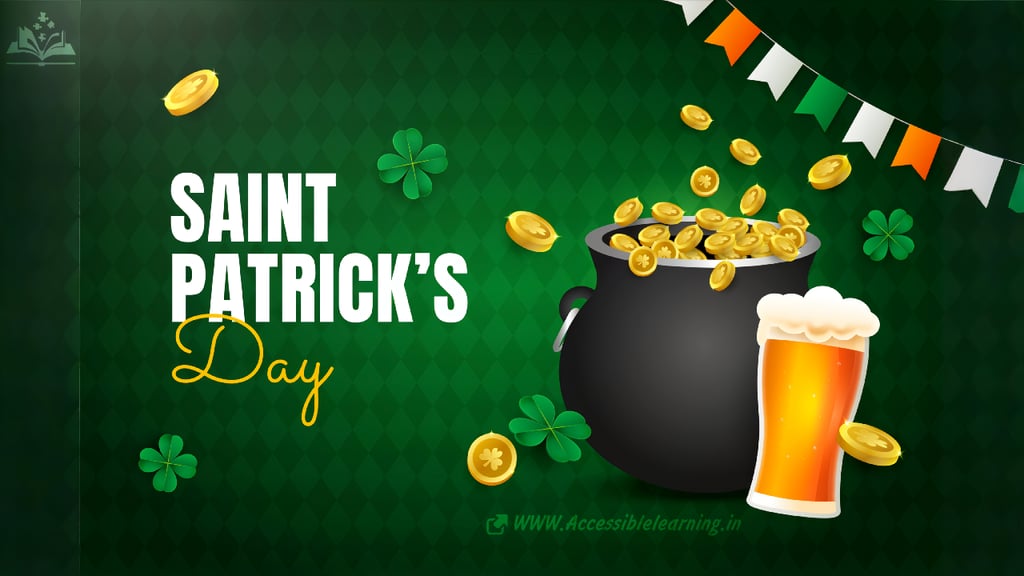
St. Patrick’s Day: History, Traditions, and Global Celebrations
St. Patrick's Day, celebrated on March 17, honors Ireland’s patron saint with vibrant parades, Irish music, cultural traditions, and the color green. Explore the history, legends, global celebrations, and fun facts about this iconic holiday.
EVENT/SPECIALCELEBRATION/FESTIVALSEUROPEAN UNION
Kim Shin
3/7/20254 min read


St. Patrick's Day, celebrated annually on March 17, is a cultural and religious holiday that honors St. Patrick, the patron saint of Ireland. Over the years, it has evolved from a solemn religious feast into a global festival that celebrates Irish heritage with parades, music, dance, and the iconic color green. Whether you're in Dublin, New York, Sydney, or Tokyo, the day brings communities together in a joyous display of Irish culture.
Who Was St. Patrick?
St. Patrick was a 5th-century missionary and bishop credited with bringing Christianity to Ireland. Born in Roman Britain, he was kidnapped by Irish raiders at the age of 16 and enslaved in Ireland. After escaping, he later returned as a missionary, spreading Christianity and establishing churches across the island. Legends surround his life, including the famous tale of him driving snakes out of Ireland—a symbolic story representing the eradication of pagan beliefs.
Other Legends About St. Patrick
Besides the snake-banishing legend, several stories highlight St. Patrick’s influence, including:
The Staff That Grew into a Tree: It is said that during one of his missionary journeys, Patrick planted a wooden staff into the ground, which miraculously grew into a tree.
The Rock of Cashel: According to folklore, when Patrick was converting the King of Munster, the devil was banished, and a piece of rock landed in Cashel, forming the Rock of Cashel.
The Holy Well Traditions: Many Irish wells are named after St. Patrick, believed to have been blessed by him and said to have healing properties.


How St. Patrick's Day Is Celebrated
Parades & Festivals
One of the most recognizable aspects of St. Patrick’s Day is the grand parades held worldwide. Some of the largest include:
Dublin, Ireland: The capital city hosts an extravagant festival with parades, music, and cultural performances.
New York City, USA: Home to the largest St. Patrick’s Day parade in the world, dating back to 1762.
Chicago, USA: Famous for dyeing the Chicago River green in a stunning visual tradition.
Boston, USA: A city deeply rooted in Irish heritage with one of the oldest celebrations.
Montreal, Canada: One of the longest-running St. Patrick’s Day parades outside Ireland, dating back to 1824.
Wearing Green & Shamrocks
Wearing green on St. Patrick’s Day is a widespread tradition. The color represents Ireland's lush landscape, St. Patrick, and Irish nationalism. The shamrock, a three-leaf clover, is linked to St. Patrick, who reportedly used it to explain the Holy Trinity.
Irish Music & Dance
Traditional Irish folk music and dance are central to the festivities. Pubs and public spaces come alive with the sound of fiddles, flutes, bodhráns (Irish drums), and lively step dancing. Famous traditional Irish dances include:
The Jig: A lively and fast-paced dance.
The Reel: One of the most popular and widely performed Irish dances.
The Hornpipe: A traditional dance often performed solo.
Food & Drink
Classic Irish dishes are enjoyed during the celebration, including:
Corned beef and cabbage: A popular dish among Irish-Americans.
Irish stew: A hearty dish made with lamb, potatoes, and vegetables.
Soda bread: A traditional Irish bread.
Shepherd’s pie: A comforting dish made with minced meat and mashed potatoes.
Guinness: Ireland’s iconic stout beer is widely consumed during the celebrations.
Irish coffee: A warm and delicious combination of coffee, whiskey, sugar, and cream.
Religious Observances
Many Irish people attend church services in honor of St. Patrick. The day was originally a Lenten feast, allowing people to pause fasting restrictions and indulge in food and drink. In Ireland, March 17th is a public holiday, and businesses, schools, and offices often close for the celebrations.
Global Influence of St. Patrick’s Day
While rooted in Irish tradition, St. Patrick’s Day has become a worldwide celebration of Irish culture. Countries with large Irish communities, such as the USA, Canada, Australia, and the UK, have embraced the holiday with parades and public events. Even countries with little Irish heritage, such as Japan, South Korea, and Brazil, have adopted the celebrations.
Unusual St. Patrick’s Day Traditions Around the World
Argentina: Buenos Aires hosts one of the biggest St. Patrick’s Day parties in South America, with an Irish street festival.
Japan: Tokyo has a St. Patrick’s Day parade featuring Irish dancing and cultural performances.
Russia: Moscow hosts a parade and Irish-themed events, despite having a small Irish community.
New Zealand: The Auckland Sky Tower is illuminated in green to mark the occasion.
India: Some cities like Mumbai and Delhi see Irish pubs holding special celebrations with themed events.
Fun Facts About St. Patrick’s Day
The first St. Patrick’s Day parade was held in New York City in 1762, not in Ireland.
Ireland only began holding parades in the 20th century, with Dublin’s first official parade in 1931.
Chicago dyes its river green using a vegetable-based dye, a tradition that started in 1962.
St. Patrick’s Day was originally associated with blue, but green became the dominant color due to Ireland’s nickname, "The Emerald Isle."
More than 13 million pints of Guinness are consumed worldwide on St. Patrick’s Day.
Leprechauns are a big part of St. Patrick’s Day symbolism, originating from Irish folklore about mischievous fairies who hoard gold.
St. Patrick’s Day is more than just a day for parades and green beer; it’s a celebration of Irish heritage, resilience, and culture. Whether you’re Irish by blood or just in spirit for the day, participating in the festivities is a way to appreciate the rich traditions and contributions of Ireland to the world. So, don your best green outfit, raise a pint, and say “Sláinte!” to honor the legacy of St. Patrick!
Subscribe To Our Newsletter
All © Copyright reserved by Accessible-Learning Hub
| Terms & Conditions
Knowledge is power. Learn with Us. 📚


